The Best Glycolic Acid Cleansers Can Transform a Dull Complexion
My skin has never looked brighter.
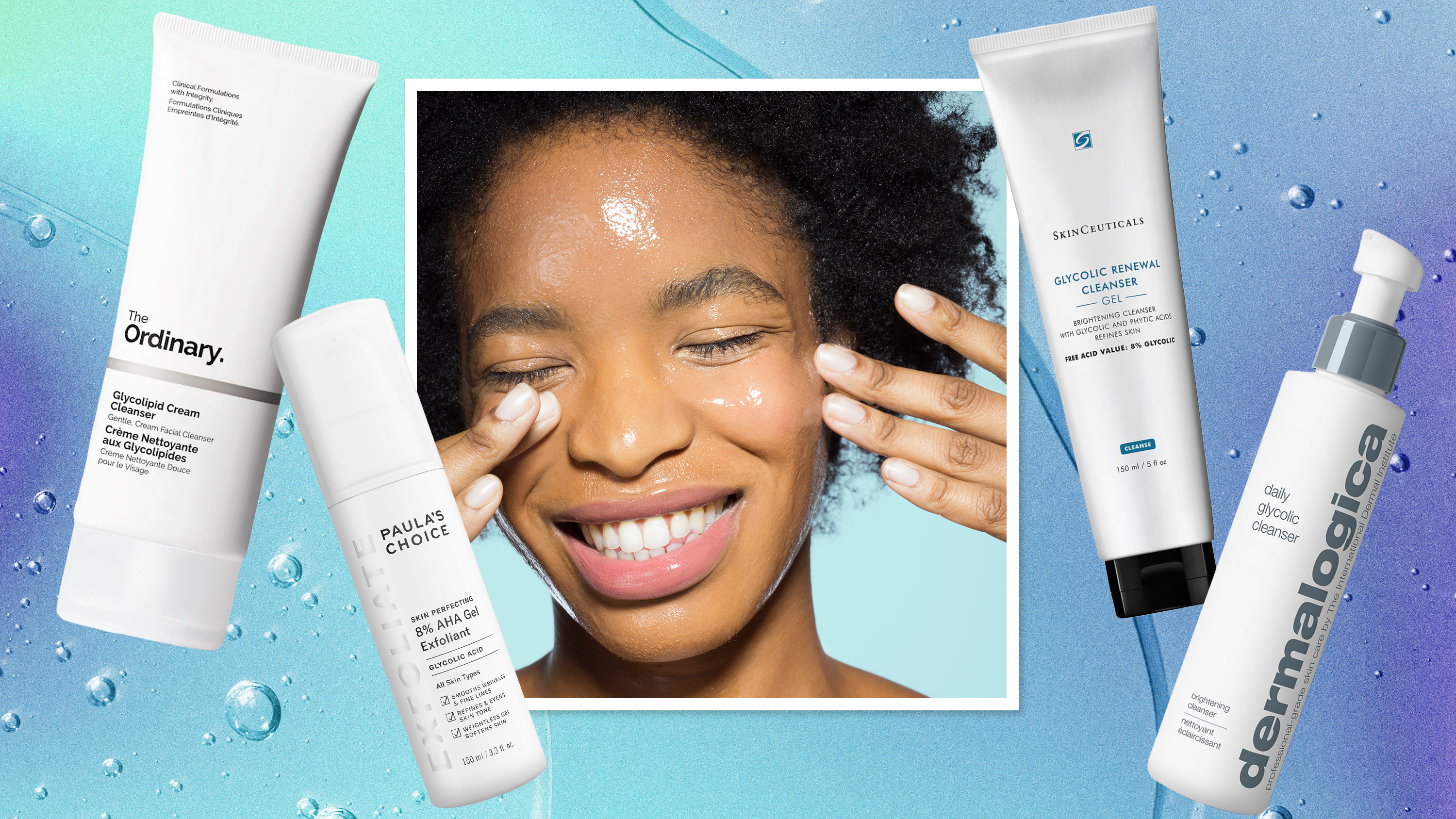
I’m usually a gentle cleanser girl. But my skin has been looking a little dull, my pores have been clogged (I spend too much time in front of a magnifying mirror), and I’ve had a couple of breakouts around my chin, so I decided to try out the best glycolic acid cleansers to give my skin a brightening boost. “Through exfoliation, glycolic acid can lessen the appearance of fine lines and wrinkles, diminish hyperpigmentation, and reduce acne,” says Dr. Anne Chapas, board-certified dermatologist and medical director at Union Square Dermatology.
Typically, glycolic acid is found in leave-on treatments like serums or peel pads. But there are a handful of wash-off cleansers—both cult classics and new launches—that are not only ideal for gentle exfoliation, but also sideswipe irritation. Many dermatologist-loved formulas are combined with salicylic acid or lactic acid, as well as hydrating ingredients like peptides and glycerin to combat irritation.
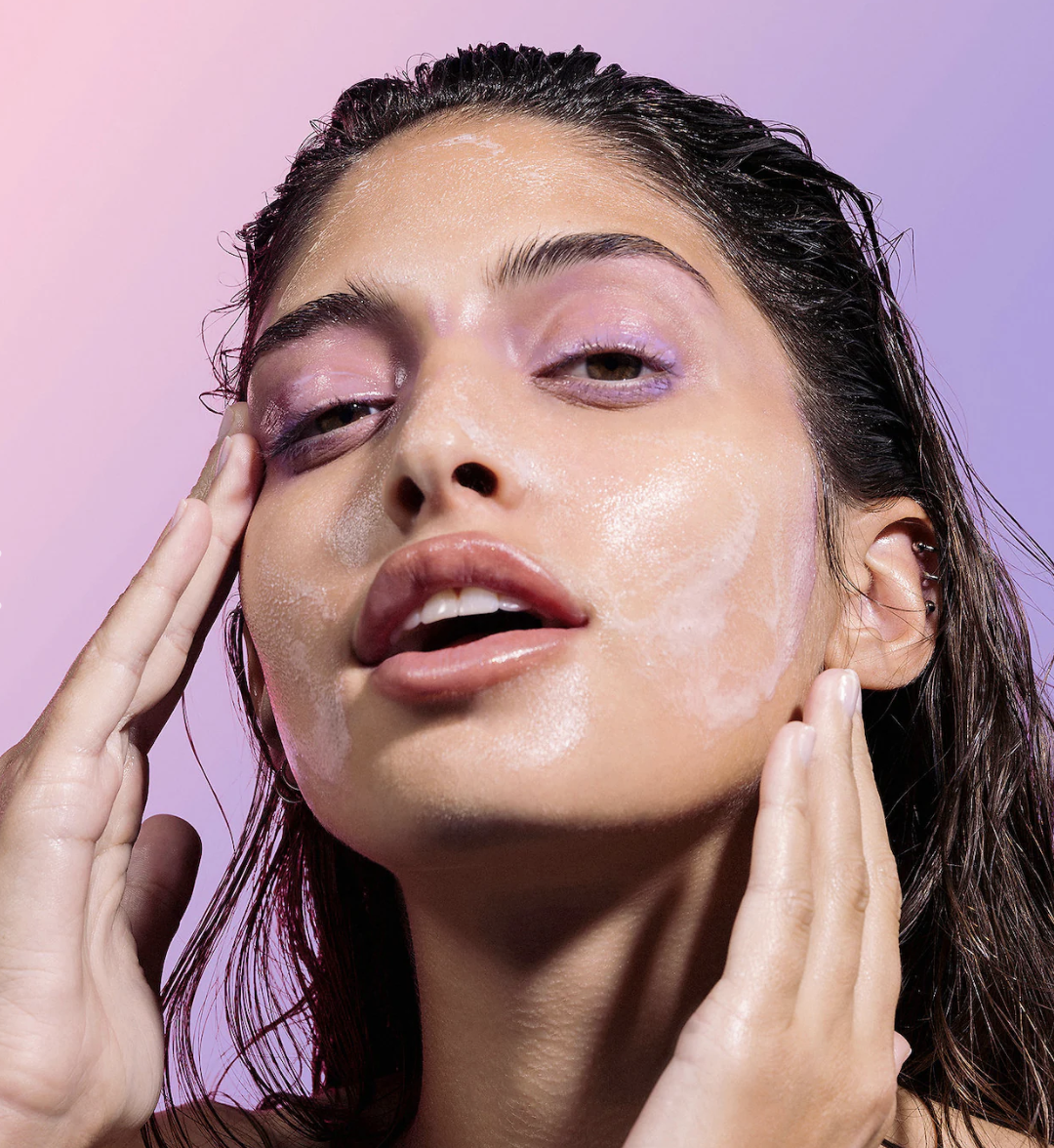
Glycolic acid cleansers come in a range of concentrations, but finding one between one to 10 percent will prevent irritation.
I’ve tried my fair share of glycolic acid-based cleansers in search of smoother, more radiant skin—and tapped top doctors for their recommendations. Here, you’ll find everything you need to know about using the active ingredient and which glycolic acid cleansers to keep in your bathroom.
The Best Glycolic Acid Cleansers
- Best Glycolic Acid Cleanser for Oily Skin: SkinMedica AHA/BHA Exfoliating Cleanser
- The Best Luxury Glycolic Acid Cleanser: Is Clinical Cleansing Complex
- Best Dermatologist-Formulated Glycolic Acid Cleanser: SOBEL SKIN 27% Glycolic Acid Facial Cleanser
- Best Glycolic Acid Cleanser for Blackheads and Whiteheads: Murad Hydration Aha/bha Exfoliating Cleanser
- Best Glycolic Acid Cleanser for Dry Skin: Dermalogica Daily Glycolic Cleanser

A combination of alpha-hydroxy acids (read: glycolic acid, lactic acid, citric acid, and malic acid) join forces with salicylic acid and soft, soothing jojoba to create this Marie Claire 2023 Skin Award winner. “I love this for those with oily or textured skin looking for a refreshing cleanser,” says Dr. Turegano. It’s a bit grainy without being too abrasive and manages to leave pores looking tighter and smoother.
Size: 6 fl oz
Key Ingredients: Glycolic, lactic, citric, malic acid, and salicylic acid (exfoliating), jojoba oil (moisturizing and soothing)
What We Love: Dermatologist-recommended; deeply exfoliating; oil-controlling
What We Don’t: May be too drying for those with dry or sensitive skin
Review for MC: "I have super sensitive skin so a glycolic acid cleanser will never be my daily go to. That said, whenever my skin starts to look dull or feel a little flakey, I try and incorporate a glycolic cleanser once a week. SkinMedica is my go to because it leave my skin with that extra-clean feeling but doesn’t strip away good oils or cause irritation." — Marisa Petrarca, Contributing Beauty Writer
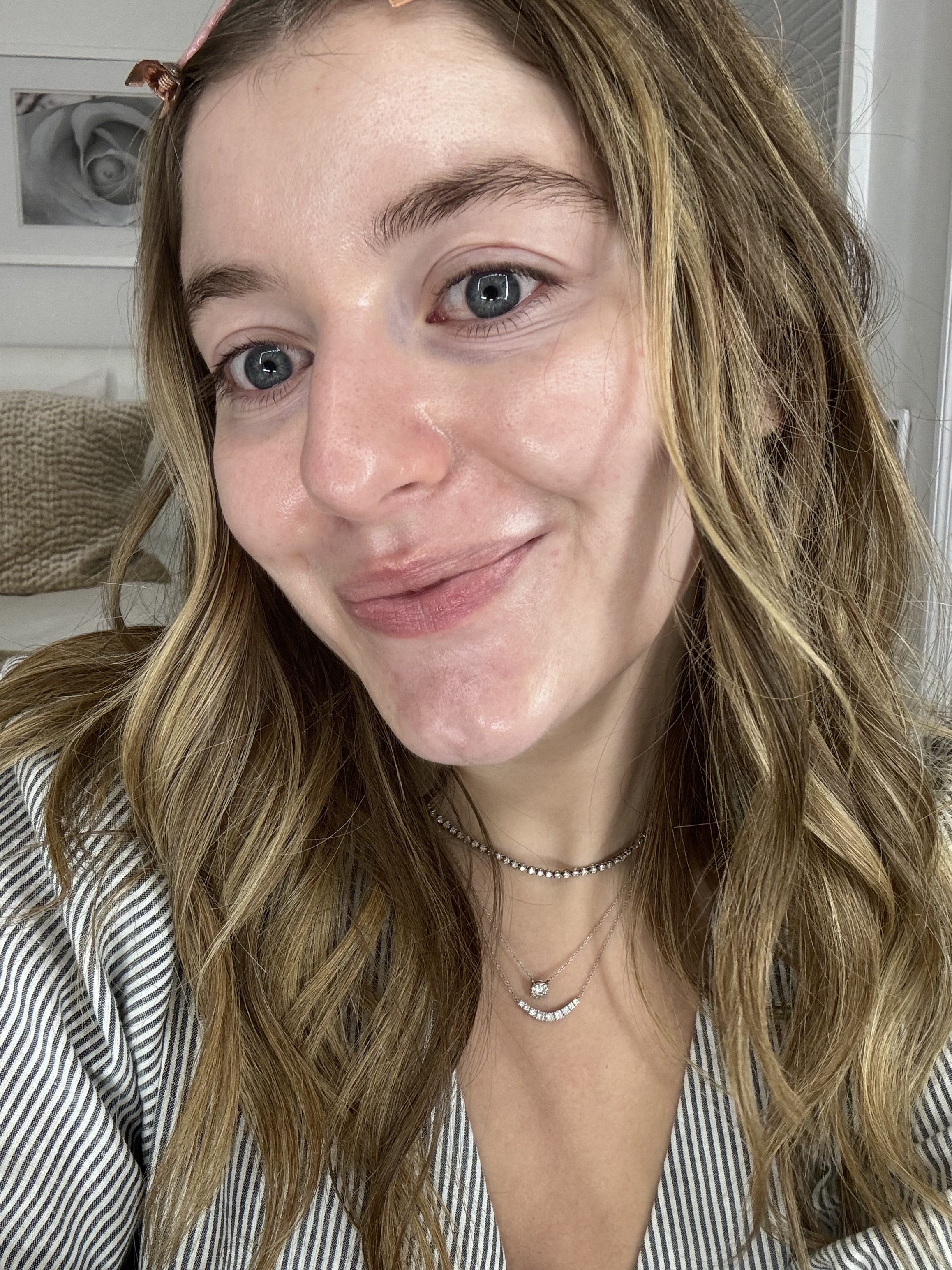
Samantha loves using the Skinmedia AHA/BHA cleanser once per week on her sensitive skin when it starts to look a little dull or flakey.
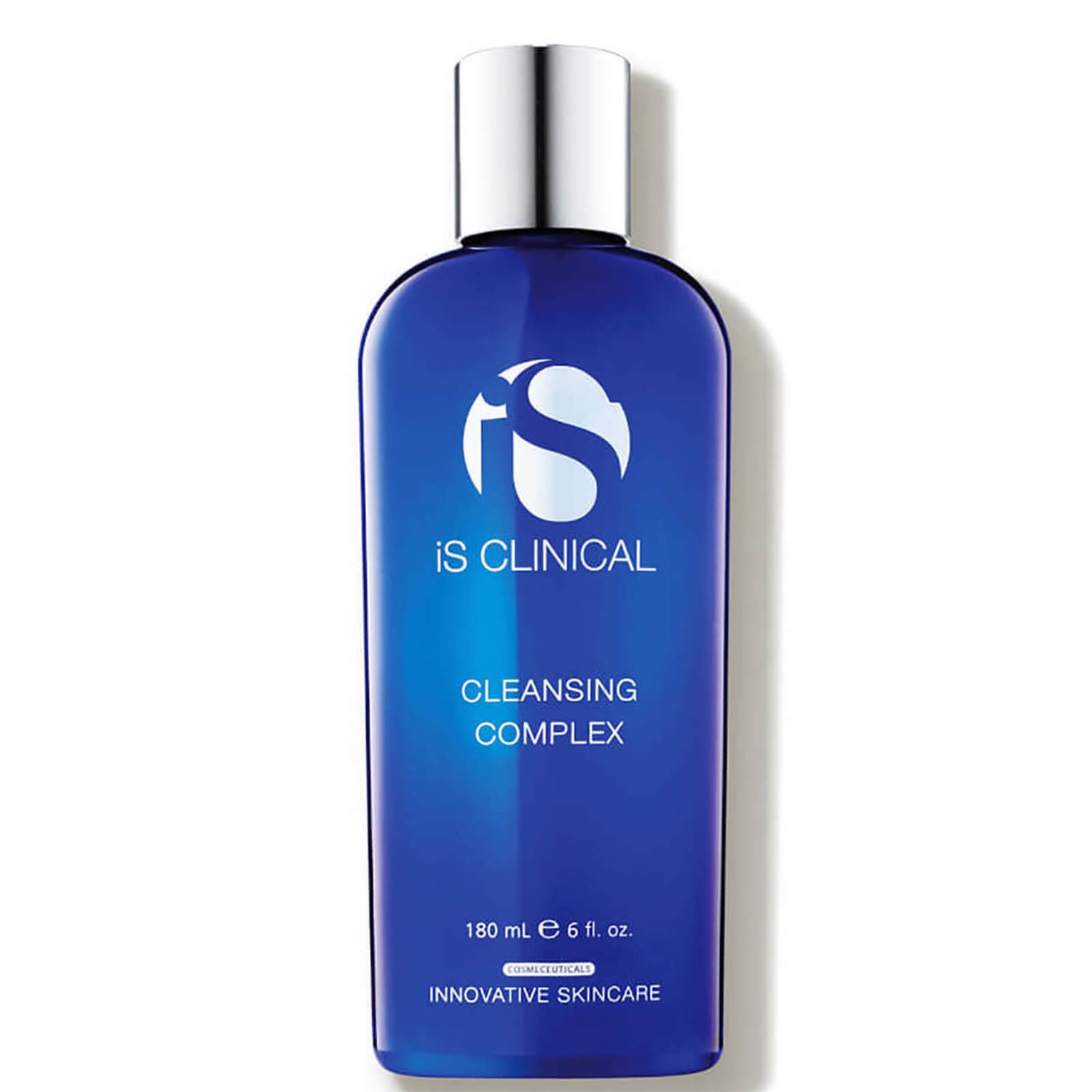
This superpowered cleanser boasts a laundry list of celebrity fans—Carey Mulligan, Rosie-Huntington Whitely, Lea Michelle, Chrissy Teigen—and rightfully so. With a blend of powerful physical and chemical acids, it reveals brighter, smoother skin pretty instantly. “This is the only thing I use consistently, and it’s always been so good to me,” Teigen shared via Instagram. While some people can tolerate it every day, normal or sensitive skin types will only want to use it a few times a week.
Size: 6 fl oz
Key Ingredients: Salicylic acid from willow bark extract, alpha-hyroxy acid from sugar cane extract (exfoliating) and retinyl palmitate (exfoliating), chamomile and green tea extract (antioxidant and soothing)
What We Love: Celebrity-loved; Marie Claire Skin Award winner
What We Don’t: Too drying for some
Review for MC: "This isn’t the first time I’ve raved about this itty-bitty cleanser for Marie Claire (it also made my list of the best salicylic acid cleansers). While I highly recommend getting your hands on the full-size version, this mini has been my go-to for all my long-weekend trips in 2024. I love that it does everything I need on the go: removes makeup, gives my skin a deep cleanse, refreshes with its gel texture, exfoliates after a flight, and is packed with antioxidants to protect against free radicals." — Marisa Petrarca, Contributing Beauty Writer

Marisa always brings the iS Clinical Cleansing Complex with her while traveling because it removes makeup and gives her skin a deep cleanse in one.
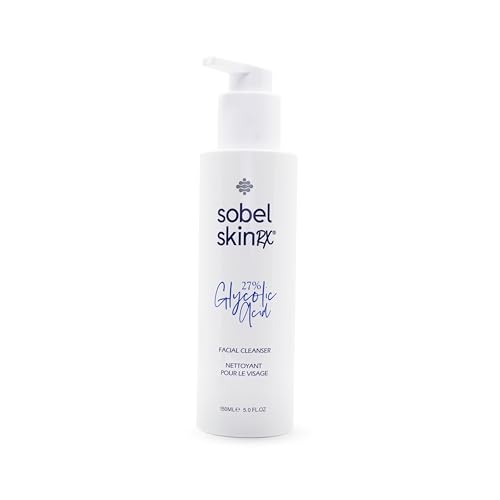
If 27% glycolic acid sounds intense, that's because it is. Most drugstore cleansers top out at 10%, but this dermatologist-formulated option takes things to the next level with the highest concentration of glycolic acid available over-the-counter. Essentially, it’s the closest thing you can get to a professional chemical peel at home. While it’s undeniably potent, the formula is expertly balanced with soothing ingredients like allantoin, aloe vera, and chamomile extracts, along with mild surfactants that cleanse without stripping your skin.
Size: 5 fl oz
Key Ingredients: Glycolic acid (exfoliating), allantoin, aloe vera, chamomile extract (soothing)
What We Love: Potent formula; fragrance and essential oil-free
What We Don’t: Not suitable for those new to chemical exfoliants or glycolic acid
Review for MC: "As Marie Claire’s beauty editor Samantha mentioned, her skin is super sensitive—but mine is the opposite. It can handle potent treatments without a hitch, which is why I was eager to try this cleanser as soon as it launched. I love how it makes my pores look practically invisible and noticeably brightens my skin on the weeks I use it compared to when I don't. Even with its high potency, it leaves my skin feeling clean, not stripped, and baby-smooth."
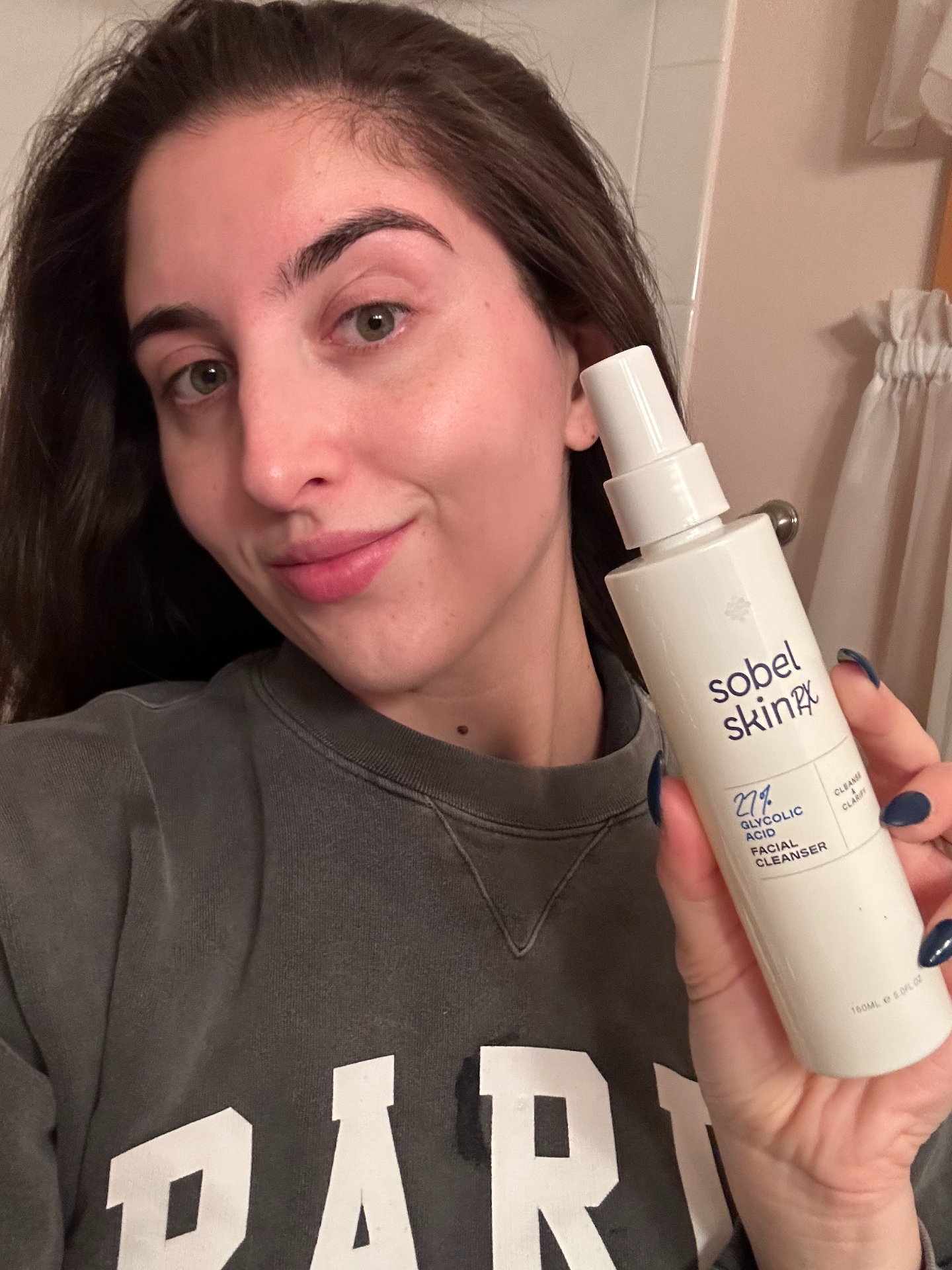
Marisa appreciates the high potency of glycolic acid in this facial cleanser for when her skin needs major brightening benefits.

This cleanser has been a staple for years, addressing everything from dull, dry skin to oily, acne-prone complexions. We named it the best for blackheads and whiteheads thanks to its powerhouse combination of salicylic acid, glycolic acid, and lactic acid. These ingredients work together to clear out pores and tackle both whiteheads and blackheads. Just be warned that it does contain physical exfoliants, which we don't recommended for use on already-inflamed skin such as pimples or cysts.
Size: 6.75 fl oz
Key Ingredients: Glycolic acid, lactic acid, salicylic acid (exfoliating), jojoba beads (physical exfoliant), vitamin C (brightening), sodium PCA (hydrating)
What We Love: Helps with blackheads, whiteheads; polishes with physical exfoliants
What We Don’t: Sodium Laureth Sulfate (which gives this cleanser its foamy texture) may be too harsh for dry or sensitive skin, only meant to be used 2-3 times weekly
Review for MC: "I’m a glycolic acid devotee, and I tend to reach for it more than salicylic acid since I’m more prone to dullness than acne. That said, this is my go-to when I’m dealing with both dullness and pesky whiteheads. In short, it’s the perfect pick-me-up for my skin when I need some extra TLC. While the physical exfoliants can feel a bit aggressive, they leave my skin looking polished and deliver noticeable brightness when I’m craving a glow." — Marisa Petrarca, Contributing Beauty Writer
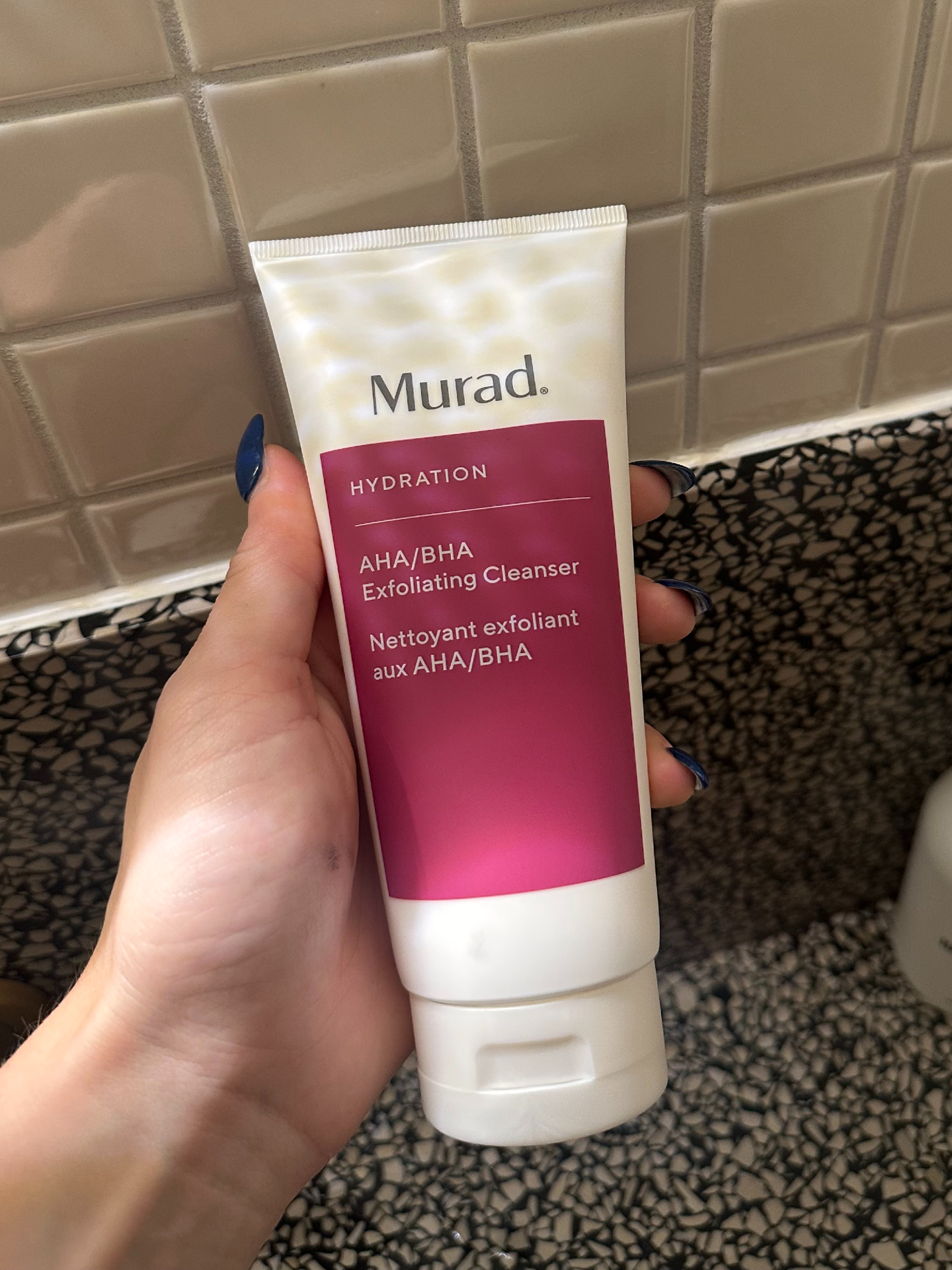
Marisa reaches for the Murad AHA/BHA Exfoliating Cleanser when she notices blackheads, whiteheads, or overall dullness.
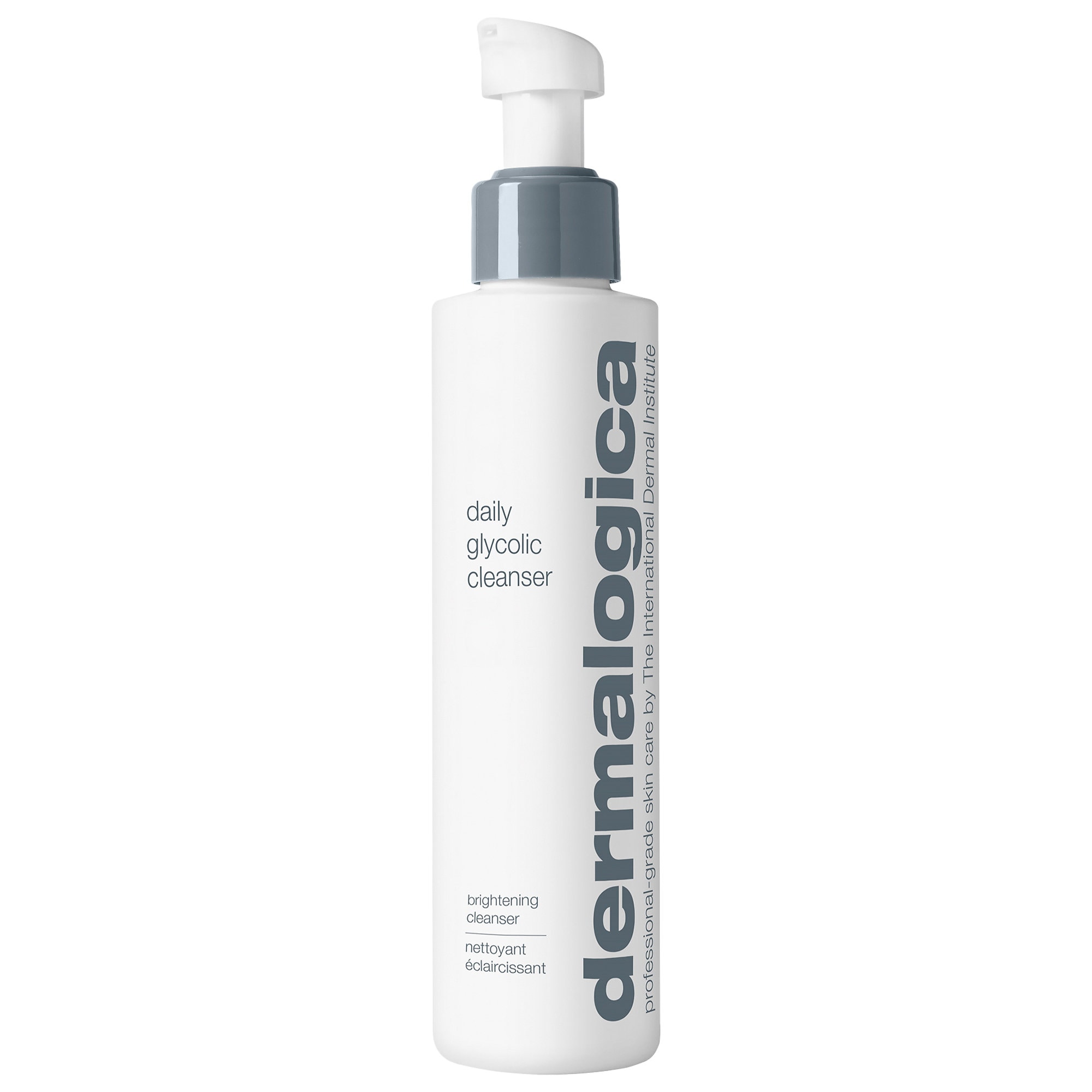
Dermalogica’s glycolic acid cleanser is gentle enough for daily use, exfoliating dead skin cells while keeping skin calm and hydrated. Ingredients like calendula, jojoba seed oil, and allantoin soothe irritation, while hyaluronic acid, glycerin, and urea provide moisture, making it a great choice for dry skin, just like one of our contributing beauty editors (more on her experience using it below).
Size: 5 fl oz
Key Ingredients: Glycolic acid (exfoliating), hyaluronic acid, glycerin, jojoba seed oil (hydrating), marigold extract and allantoin (soothing)
What We Love: Hydrating; gentle enough for daily use
What We Don’t: Contains both added fragrance and essential oils
Review for MC: "This is a cleanser I always come back to for its refreshing scent and soothing gel texture that never stings or burns. It’s my go-to for both morning and evening cleanses when I don’t need a heavy-duty treatment but still want to see brightening effects and nourish my dry skin." — Marisa Petrarca, Contributing Beauty Writer
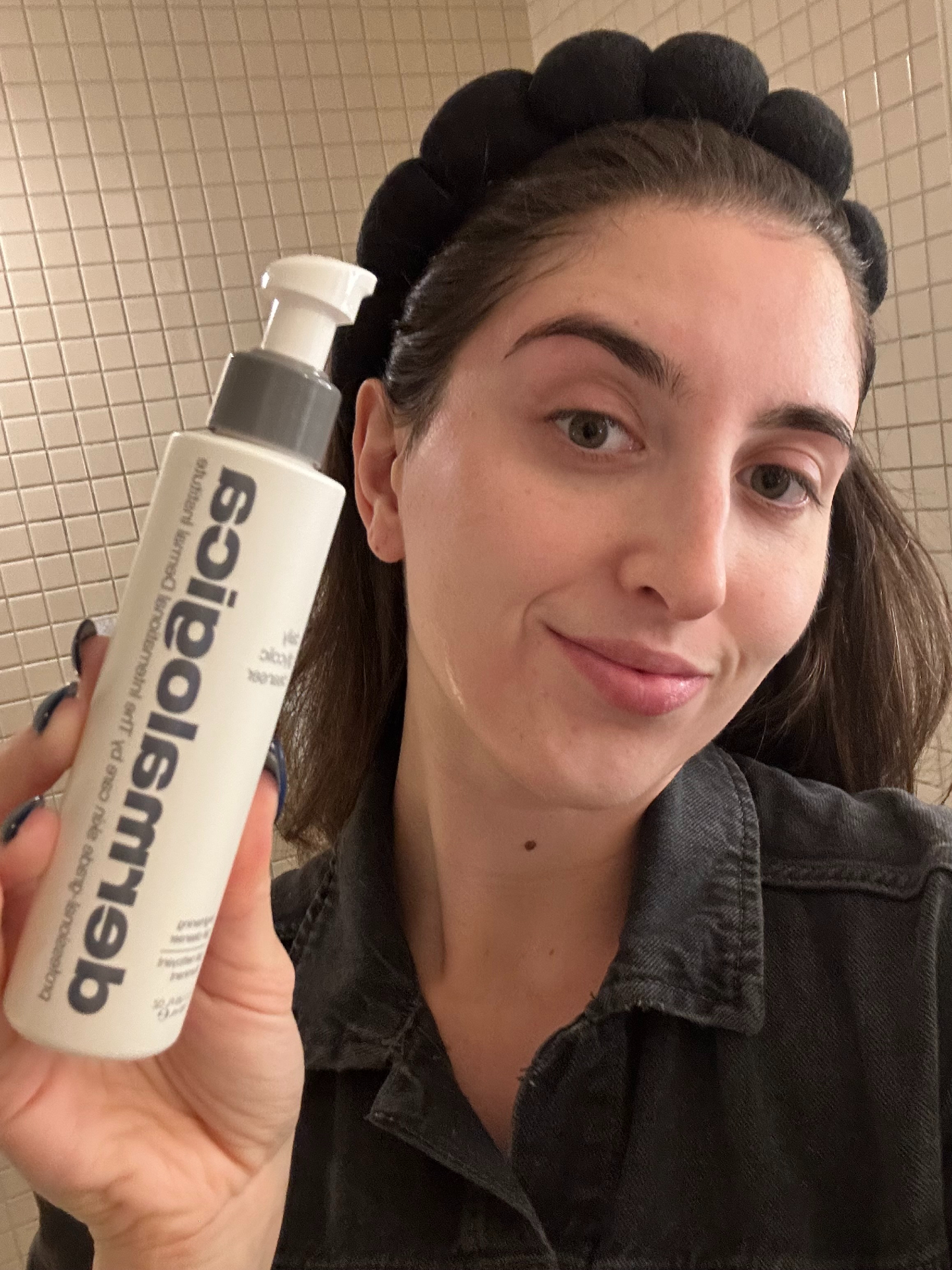
Marisa always returns to the Dermalogica Daily Cleanser because it’s a reliable option for both morning and night, giving her a soothing and refreshing cleanse every time.

Getting acne under control with a glycolic acid cleanser doesn’t have to cost you much. Just take Aja Naomi King’s word for it—this cleanser was an integral part of cleaning up her adult acne. “I’ve seen such a difference with this,” she shared with Marie Claire. “I’ve been using it for years.” The formula features a 3.5 percent concentration and boosts acne-fighting properties with a hint of salicylic acid.
Size: 6.7 fl oz
Key Ingredients: Glycolic acid and salicylic acid (exfoliating), glycerin (hydrating), aloe vera (soothing)
What We Love: Affordable; celebrity-loved
What We Don’t: Contains menthol, which may be irritating to some
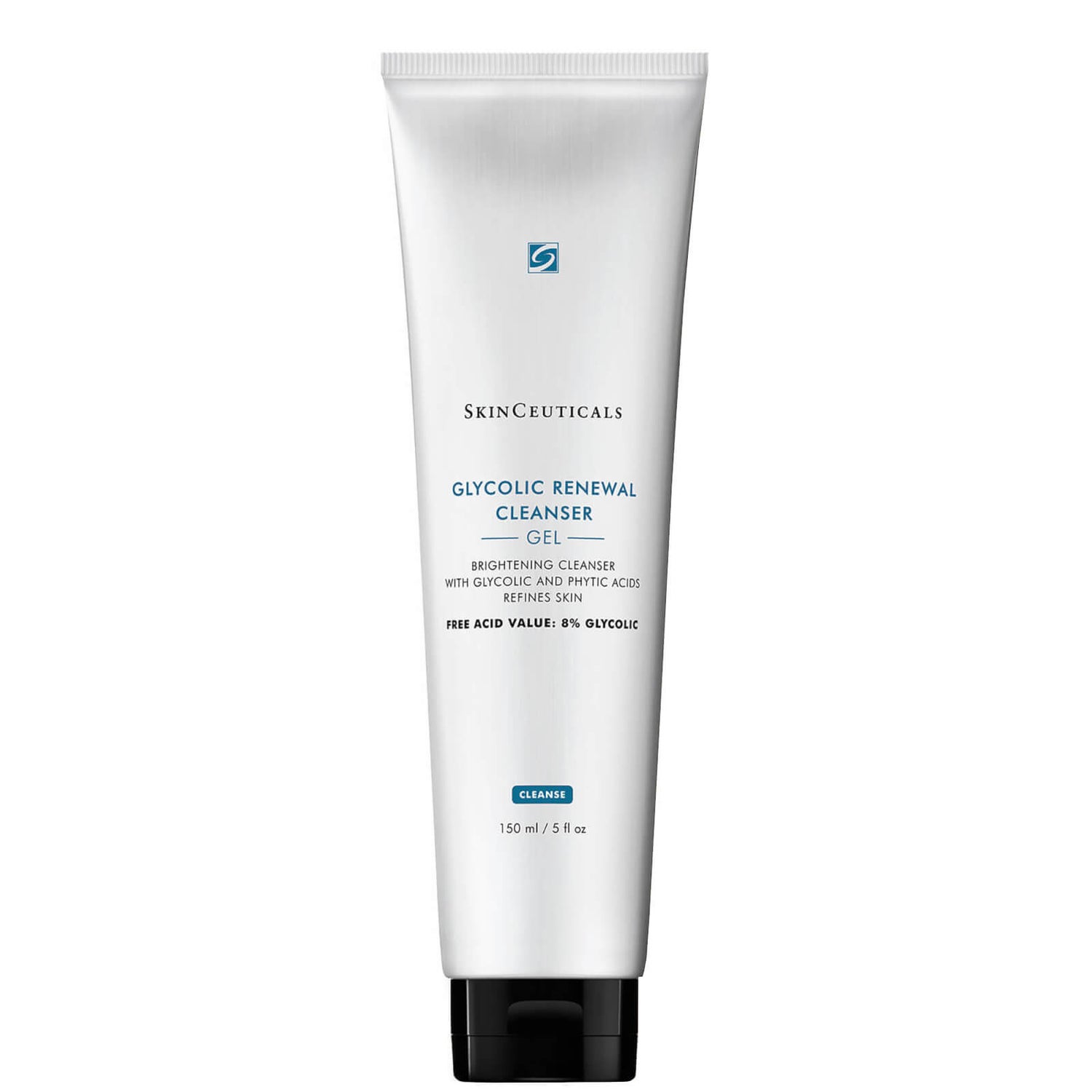
A do-it-all cleanser with Sofia Richie’s stamp of approval, this gentle cleanser, which features eight percent glycolic acid, is a great addition to most routines. It is powerful enough to remove dirt, oil, and makeup without stripping the skin of essential oils. In fact, it does just the opposite. While it removes dead skin cells and provides exfoliation, this gel-to-foam face wash simultaneously replenishes hydration with aloe leaf extract.
Size: 5 fl oz
Key Ingredients: Glycolic and salicylic acid (exfoliating), aloe vera (soothing), glycerin (hydrating)
What We Love: Gentle enough for daily use; great texture; gives clean feeling
What We Don’t: A bit harsh for sensitive skin
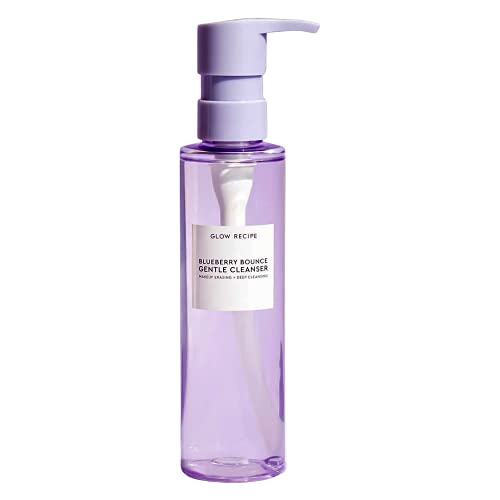
This beautifully packaged cleanser won’t just look great on your vanity—it’s also ideal for combination skin, thanks to its balanced blend of hydrating, antioxidant, and gentle exfoliating ingredients.
Size: 5.4 fl oz
Key Ingredients: Glycolic acid and lactic acid (exfoliating), licorice root and bearberry leaf extract (brightening),
What We Love: Also comes in a travel-size version; uses lots of soothing antioxidants
What We Don’t: Contains added fragrance

While it’s true that some sensitive skin types may not tolerate glycolic acid well, this cleanser is a solid option if you want to know exactly how much you're getting — 3.4% free acid value, meaning the active and effective amount of glycolic acid. (Not all brands are this transparent.) Paired with a mild cleansing surfactant and hydrating glycerin to balance the exfoliation, it’s a smarter choice for sensitive skin. Just be sure to patch test and start slow, so your skin can adjust.
Size: 6.7 fl oz
Key Ingredients: Glycolic acid (exfoliating), glycerin (hydrating)
What We Love: This brand is transparent about the glycolic acid content; oil-free
What We Don’t: It's fragrance-free, but some shoppers mentioned they don't like it's natural scent

While foaming agents can provide that extra-clean feeling, the surfactants responsible for the foam can be drying. Jan Marini created a solution. Her soap-free, non-foaming, glycolic acid formula still leaves skin with a fresh, squeaky feel—you won’t need to use a toner or additional astringent before bed. The bottle is huge and will last you months, making the investment pretty worthwhile. Oh, and Kendall Jenner swears by it, as she revealed in a morning skincare tutorial, using it daily to keep her acne in check.
Size: 8 fl oz
Key Ingredients: Glycolic, lactic, citric, malic acid, and salicylic acid (exfoliating), jojoba oil (moisturizing and soothing)
What We Love: No alcohols; well tolerated by most skin types
What We Don’t: Can sting a little
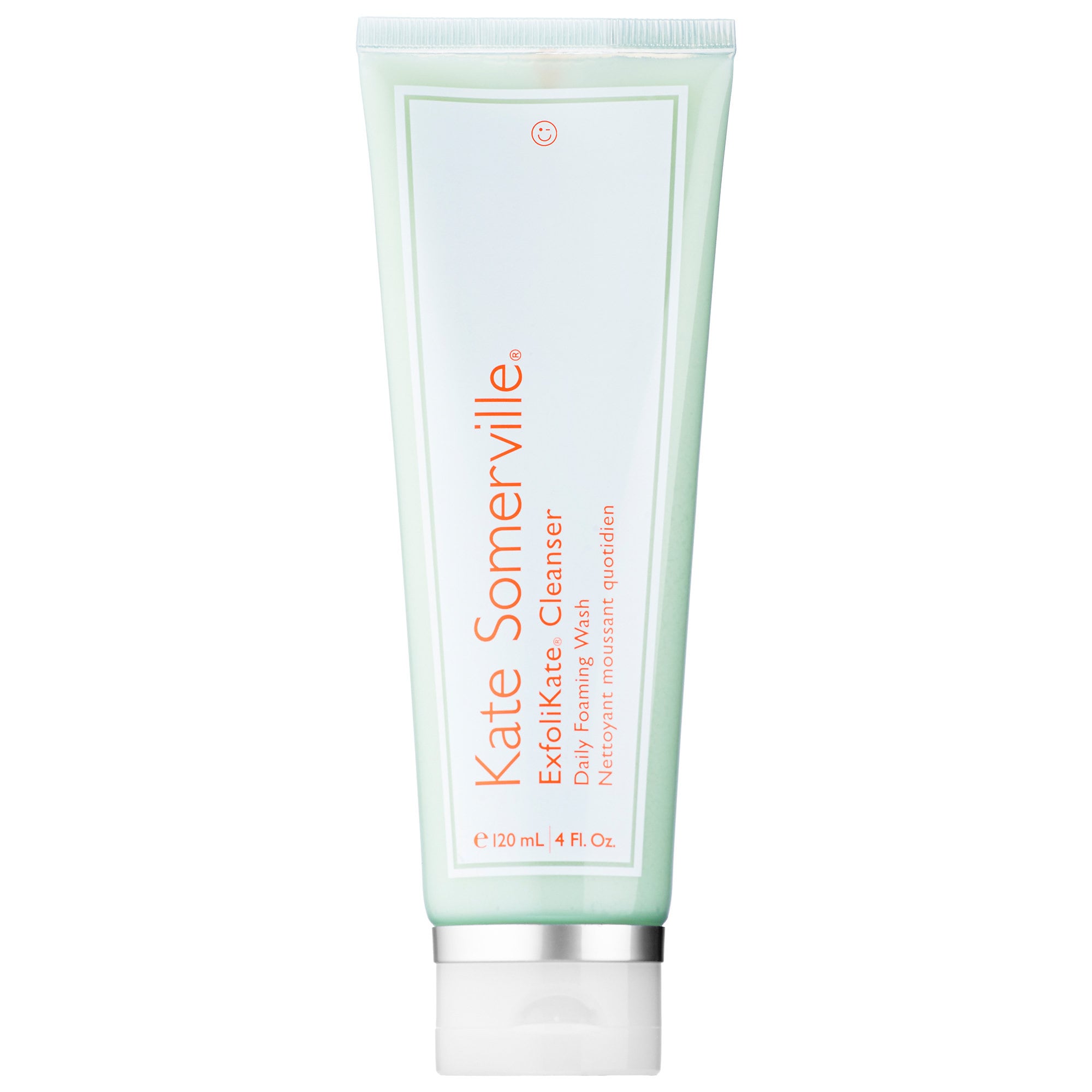
Skipping an exfoliating step can leave skin with dead skin cell buildup and accumulating dirt and oil. Does this sound like you? Try this powerful cleanser, which leverages the benefits of glycolic acid and fruit enzymes. The latter—which includes papaya, pineapple, and pumpkin—provides extra exfoliation and pore-tightening properties without risking dryness or flaking.
Size: 6 fl oz
Key Ingredients: Glycolic acid and lactic aid (exfoliating), glycerin (hydrating) aloe leaf juice powder (soothing)
What We Love: Vegan and cruelty-free
What We Don’t: Can be abrasive if used daily
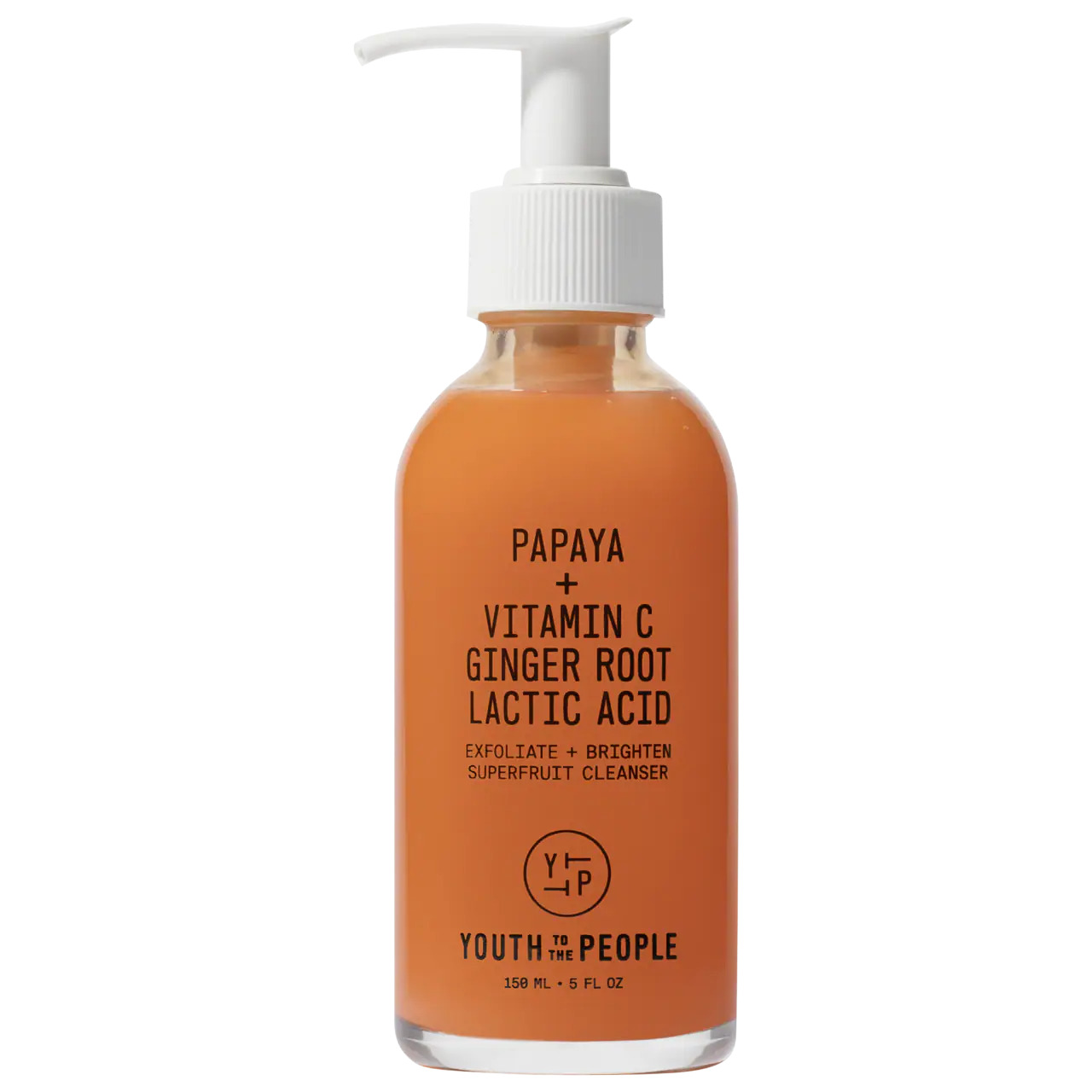
Although this cleanser is new as of September 2024, it has already garnered hundreds of five-star reviews from shoppers who are impressed by how it lightened their dark spots in just weeks of consistent use. Plus, a little goes a long way to create a rich lather for a deep cleanse. A quick note, though: it’s not meant for daily use. The brand recommends using it three times a week to target skin texture and enhance your glow.
Size: 5 fl oz
Key Ingredients: Glycolic, lactic, salicylic, and phytic acids (exfoliating), ginger root and papaya extract (brightening), niacinamide (anti-acne, brightening, and firming), caffiene and vitamin E (protective antioxidants)
What We Love: Recyclable packaging; it can also double as an exfoliating mask when left on the skin for a minute
What We Don’t: Only meant to be used three times per week
What Are the Benefits of a Glycolic Acid Cleanser?
Glycolic acid is a chemical exfoliant, specifically an alpha-hydroxy acid, so it will gently remove dead skin cells to reveal brighter, new skin underneath. “Through exfoliation, glycolic acid cleansers can help improve dullness, texture, and uneven skin tone, as well as acne,” says Dr. Toregano. “In addition to exfoliating the skin superficially, it can work deeper on the collagen level to help promote collagen production, reducing fine lines and wrinkles.”
While glycolic acid-packed serums, masks, peels, or treatments are markedly gentle compared to other acids, a cleanser is remarkably well tolerated because of its short-contact nature.
Do I Need a Glycolic Acid Cleanser?
Most adults can benefit from a glycolic acid cleanser, especially “if they are looking to achieve a refreshed and revitalized look,” says Dr. Turegano. Along with a personalized routine, a glycolic acid cleanser can target fine lines, breakouts, or uneven tone. “The exfoliating and hydrating properties of glycolic acid make it a savior for sun-damaged skin,” adds Dr. Chapas.

Glycolic acid cleansers come in a variety of textures: Some foam, other are cream, and a handful are gel-based.
That said, depending on your skin concerns, a different active ingredient might be better suited for you. Salicylic acid cleansers are great for targeting blackheads and whiteheads, as well as regulating oil production, whereas azelaic acid cleansers can be ideal for those with rosacea or inflammation-prone skin.
What Concentration of Glycolic Acid Should I Look For?
Search for a glycolic acid concentration between five to 10 percent, depending on your skin type. “I typically recommend using a cleanser that is less than five percent on normal skin or if you want to use something daily,” says Dr. Turegano. “For strengths closer to 10 percent, only use the cleanser one to two times a week.” If you have sensitive or rosacea-prone skin, you can even look for it in concentrations under one percent—you’ll get exfoliating benefits without irritation or dryness.
When Should I Use a Glycolic Acid Cleanser?
You don’t need to use a glycolic acid cleanser every time you wash your face. “Using it twice a day may be excessive and potentially over-exfoliating,” says Dr. Turegano. Instead, use a glycolic acid cleanser only at night. “It can potentially make your skin more sensitive to the sun if you use it in the morning.”
Meet the Dermatologists

Dr. Mamina Turegano, a triple board-certified dermatologist, internist, and dermatopathologist who is on a mission to revolutionize traditional approaches to dermatology while empowering her patients and audience to own their own wellness from the inside out.

Anne Chapas, M.D. is a Manhattan-based dermatologist and dermatologic surgeon who specializes in laser surgery, Mohs micrographic surgery for the treatment of skin cancers, and cosmetic procedures.
Dr. Chapas is the Founder and Medical Director of UnionDerm, a state-of-the-art center for medical and cosmetic skin treatments. Dr. Chapas is certified by the American Board of Dermatology and she is a Fellow of the American Society for Laser Medicine & Surgery, the American Academy of Dermatology, the American College of Mohs Surgery and the American Society of Dermatologic Surgery. She is also a Clinical Instructor of Dermatology at the Mount Sinai Medical Center.
Dr. Chapas graduated magna cum laude in Biochemistry from the University of Pennsylvania and earned an M.D. with honors from Harvard Medical School. She completed a residency in Dermatology and prestigious fellowships in Mohs surgery and in procedural, cosmetic and laser dermatology.
Get exclusive access to fashion and beauty trends, hot-off-the-press celebrity news, and more.

Samantha Holender is the Senior Beauty Editor at Marie Claire, where she reports on the best new launches, dives into the science behind skincare, and shares the breakdown on the latest and greatest trends in the beauty space. She's studied up on every ingredient you'll find on INCI list and is constantly in search of the world's glowiest makeup products. She's constantly tracking the biggest nail and hair trends to pop up in the beauty space, going backstage during fashion weeks, tracking celebrity looks, and constantly talking to celebrity hair stylists, nail artists, and makeup artists. Prior to joining the team, she worked as Us Weekly’s Beauty and Style Editor, where she stayed on the pulse of pop culture and broke down celebrity beauty routines, hair transformations, and red carpet looks. Her words have also appeared on Popsugar, Makeup.com, Skincare.com, Delish.com, and Philadelphia Wedding. Samantha also serves as a board member for the American Society of Magazine Editors (ASME). She first joined the organization in 2018, when she worked as an editorial intern at Food Network Magazine and Pioneer Woman Magazine. Samantha has a degree in Journalism and Mass Communications from The George Washington University’s School of Media and Public Affairs. While at GWU, she was a founding member of the school’s HerCampus chapter and served as its President for four years. When she’s not deep in the beauty closet or swatching eyeshadows, you can find her obsessing over Real Housewives and all things Bravo. Keep up with her on Instagram @samholender.

